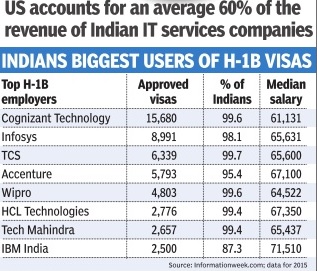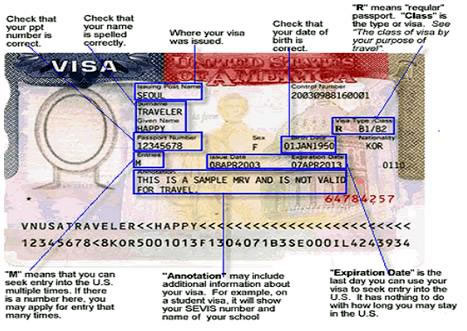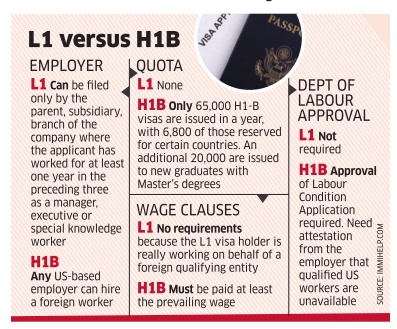This article covers Donald Trump USA Visa Decisions and proposals, What impact Donald Trump becoming President of US will have on Indian IT Engineers in the US? And What type of USA Visas are there? The difference between H1B and L1 USA Visas.
Table of Contents
Donald Trump USA Visas Decisions and proposals
The new US President, Donald Trump, plans to ‘make America great again’ by focusing on ‘make in America’. His ‘buy American, hire American’ pledge has unnerved the global business community because it has the potential to disrupt global trade in goods and services. The Trump administration could make life more difficult for legal immigrants to the US who are on H-1B visas, a large chunk of which is used by the Indian information technology industry.
On 28 Jan 2017, Donald Trump issued an executive order barring the entry of refugees from seven Muslim-majority countries into the US, causing chaos at airports across the US. The order applied to legal immigrants and visa holders from seven countries — Syria, Iraq, Iran, Somalia, Sudan, Yemen and Libya. The executive order suspends refugee admissions for 120 days and bars all immigration for 90 days from Muslim-majority countries with terrorism concerns. President Donald Trump says his halt to immigration from seven Muslim-majority nations and ban on refugees is being done for the national security. A New York federal judge issued an emergency stay on the order late Saturday US time.The heads of Google, Facebook, Microsoft, Twitter, Uber and several others condemned the order.
With a hard stance on immigration, the High-Skilled Integrity, and Fairness Act of 2017 that will overhaul the popular H-1B and L1 visas has been tabled in the US Congress. This reform bill, if passed, would mean significant changes in the way the H-1B visas are granted to companies and allocated to employees by them. Some of the worst hit by the new H-1B bill will be Indian companies such as Infosys, TCS, and Wipro, as well as US tech giants like Apple, Facebook,, and Google, who use the H-1B visa to fill positions that cannot be filled by American workers
Some of the Donald Trump proposals are
- Raise minimum wage under H1-B to $130,000 that’s about a 50% increase over the median wage of $61,000-$71,0000 that most companies now pay. This would mean that companies would have to either pay rather highly for the skilled workers, or not choose foreign employees in favour of American citizens.
- The new visa reform bill also eliminates the category of lowest pay, and raises the salary level at which H-1B dependent employer are exempt from non-displacement and recruitment attestation requirements to greater than $130,000.
- The H-1B visa bill removes the ‘per country’ cap for employment-based immigrant visas. It sets aside 20 percent of the annually allocated H-1B visas for small companies and startup employers (50 or fewer employees) to ensure small businesses have an opportunity to compete for high-skilled workers.
- Authority for the Department of Homeland Security to investigate, audit and enforce compliance with L-1 program.
- Ensure that the brightest students educated in the US will receive preference for an H-1B Visa.
- Remove clause that allows authorities to skip troublesome paperwork if H1-B applicants have the equivalent of a Master’s degree or higher
Indian Information Technology and the USA
The Indian information technology services industry is now estimated to be worth $150 billion. Industry estimates place the total number of Indian engineers on H-1B visas in the US at 300,000-350,000. This includes employees of Indian tech companies such as Infosys, Tata Consultancy Services and Wipro, as well as those employed by American multinationals like Accenture and IBM. Indian engineers have for long viewed the US as the land of El Dorado with its promise of riches, professional and personal often called as Fatherland.
Optional Practical Training (OPT) extension for STEM (science, technology, engineering, and mathematics) students, from 2015, allows graduates with STEM degrees to stay in the US for as much as three years after graduating from college. The new order will curtail that period, hurting the future plans of 165,918 Indian students in the US. Indians comprise the second largest ethnic group after the Chinese when it comes to international student enrolment in the US, according to the Institute of International Education.
Different Kind of USA Visas
The visa policy of the United States deals with the requirements which a foreign national wishing to enter the United States must meet to obtain a visa, which is a permit to travel to, enter, and remain in the United States. Visitors to the United States must obtain a visa from one of the United States diplomatic missions unless they come from one of the visa exempt countries or Visa Waiver Program countries. While there are about 185 different types of visas, there are two main categories of U.S. visas:
- Nonimmigrant visa – for temporary visits such as for tourism, business, work or studying. Non-immigrant visas include B1 visa, B2 visa, H1B visa, H4 visa, L1 visa, L2 visa.
- L-1 visas allow companies to bring overseas employees to work temporarily in the U.S.
- F-1 visas let foreign students study here and become eligible to work in their field for up to 29 months without a work permit.
- J-1 visas go to visitors such as scholars or students from designated countries.
- While J-1 visas are capped by sponsoring organization, L-1 and F-1 visas aren’t capped at all
- Immigrant visa – for people to immigrate to the United States. At the port of entry, the immigrant visa holder is processed for a permanent resident card (I-551, often known as a ‘green card’). Upon endorsement (CBP admission stamp) it serves as a temporary I-551 evidencing permanent residence for 1 year. Temporary worker visas are for persons who want to enter the United States for employment lasting a fixed period of time and are not considered permanent or indefinite.
Contrary to a popular misconception, a U.S. visa does not authorize one’s entry to the United States, nor does it authorize the alien’s stay in the U.S. in a particular status. A U.S. visa only serves as a preliminary permission given to one to travel to the United States and to seek admission to the United States at a designated port of entry. The final admission to the United States in a particular status and for a particular period of time is made at the port of entry by a U.S. Customs and Border Protection (CBP) officer. For those entering the U.S. in a nonimmigrant visa status these details are recorded by the CBP officer on the alien’s Form I-94 (Form I-94W for citizens of the Visa Waiver Program countries entering the U.S. for short visits), which serves as the official document authorizing the alien’s stay in the United States in a particular non-immigrant visa status and for a particular period of time.
Following is a sample non-immigrant US visa stamp in the applicant’s passport.
Entering the U.S. on an employment visa may be described as a three-step process in most cases.
- First, the employer files an application with U.S. Citizenship and Immigration Services requesting a particular type of category visa for a specific individual. If the employer’s application is approved, it only authorizes the individual to apply for a visa; the approved application is not actually a visa.
- The individual then applies for a visa and is usually interviewed at a U.S. embassy or consulate in the native country.
- If the embassy or consulate gives the visa, the individual is then allowed to travel to the U.S. At the border crossing, airport, or other point of entry into the U.S., the individual speaks with an officer from U.S. Customs and Border Protection to ask to admission to the U.S. If approved, the individual may then enter the U.S.
H-1B visa and difference between H1-B and L1 USA Visas
L1 visas are for shorter periods and are often used by top management.
The H-1B visa programme, allows highly skilled workers to travel to the US, has been a cornerstone of Indian IT’s success for almost two decades now.
- A foreign worker with an H-1B visa can stay in the US for a maximum of six years, with an initial validity of three years that can be extended by another three.
- This visa is aimed at helping companies employ foreigners in positions for which they have been unable to find American employees.
- The minimum salary for an employee holding the H-1B visa is set at $60,000 per year.
- H-1B visa holders are allowed to apply for permanent residency in the US as well as buy or sell property in the country.
- In 2014 Obama administration’s allowed spouses of H1-B visa holders to apply for work permits in the country
- United States Citizenship and Immigration Services (USCIS), the fiscal year starts from October 1st of each year and ends September 30th.
- The H-1B quota opens every year on the 1st Of April.U SCIS accepts applications for H-1B, until the quota gets over.
- The H-1B Visa has an annual limit called “cap” each fiscal year. The cap limits to 85,000 visas each year Out of 85,000 visas, 20,000 visas are typically for master’s degree quota. And also, 6800 visas are set aside for Chilean and Singaporeans under H1B1 Category.
The H-1B visa is highly coveted in the technology industry and the US usually receives more H-1B applications than the cap of 85,000; for example, 236,000 applications were sent for the H-1B visas process in 2016, and the visas were granted on the basis of a lottery.
If implemented, the executive order could seriously hit the movement of students and skilled engineer








Look, everyone knows the US needs foreign talent like the highly-skilled Indian techs. They bring more math and science knowledge to America, and Trump would be shooting himself in the foot to impede this welcome injection into the US economy.